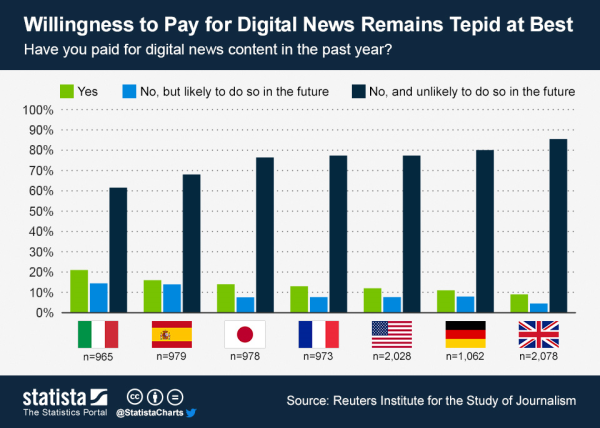Tuition discounting is a common way to attract students and or to make the university program affordable to potential students. Universities will encounter an even greater mindset challenge in respect to price as digital courses, MOOCs, and hybrid courses proliferate and become more acceptable as an education credential to employers. At that time, pricing will be an even bigger issue since you are looking at the willingness to pay at all, not the level of payment. I speak from experience since I spent many years of my professional life in the digital content industry convincing consumers to pay for what was available for free elsewhere. My experience was rooted in the social expression industry marketing paid online greeting cards, instant messenger content and mobile content, generally widely available for free. Nevertheless,we were able to show value and millions of consumers were willing to pay every year for that digital content.
One industry that is even closer to education content has been fighting a battle for years to convince users to continue to pay for their product: newspapers, magazines and TV news. See the chart below about the willingness to pay for digital content around the world.
According to the Reuters Institute for the Study of Journalism, the good news is that the willingness to pay for digital news content has slightly increased since last year. The bad news, however, is the fact that those unwilling to pay for digital news content are still in the vast majority. Only 12 percent of American consumers have paid for digital news content in the past year and, to make things worse, only 9 percent of those who haven't paid for digital news in the past can see themselves doing so at some point in the future. That means almost 80 percent of Americans have no intentions of ever paying for digital news content, a number that will probably give chills to newspaper executives who are desperately trying to monetize their digital offerings.
Now think of the future of education content. The largest MOOC providers Coursera and EdX are getting consumers used to high quality free lecture content provided by the highest profile universities in the world. The motivations of the providers differ. EdX, sponsored by Harvard, MIT and Berkeley seems to look at this project initially as a huge -- admittedly exciting -- research laboratory to learn more about learning and teaching on a scale unimaginable a few years ago. And, it is building an even bigger worldwide brand recognition by offering a direct learning experience to hundreds of thousands of students who will never set foot on their ivied campuses.
The CEO of EdX says that the $60 million investment is supposed to be paid back and not just a donation to this effort. In the case of the other large scale provider, Coursera, the case is completely clear. Investors are certainly not looking at a philantrophic investment, but want a return on their money.
Coursera is starting to experiment with in-direct monetization methods, such as recruiting fees, sponsorships, and licensing fees from universities to use the content as teaching material. Those of us in the digital industry have experimented with all of these business models for years. Companies such as LinkedIn have built sizable businesses based on small percentages of users paying for premium features and, of course, by generating revenue through all types of targeted and not so targeted advertising.
The message to university administrators and academic deans: prepare for a world where your digital content is freely available. In order to market and sell education content, you will have to either own an education brand that students perceive as superior and worthy of a premium payment or you need to offer additional services, tutoring, mentoring, career placement, and highly connected and active alumni networks. It may not sound that different from what you do today, but think about it. Online education marketing is centered around the content delivered and the credential obtained. Auxiliary services are important but that's not how we explain the value of the university tuition today.
Digital education content will require more value add to get paid, otherwise university presidents will be in the same situation as newspaper executives shutting down large organizations and looking for new jobs.



